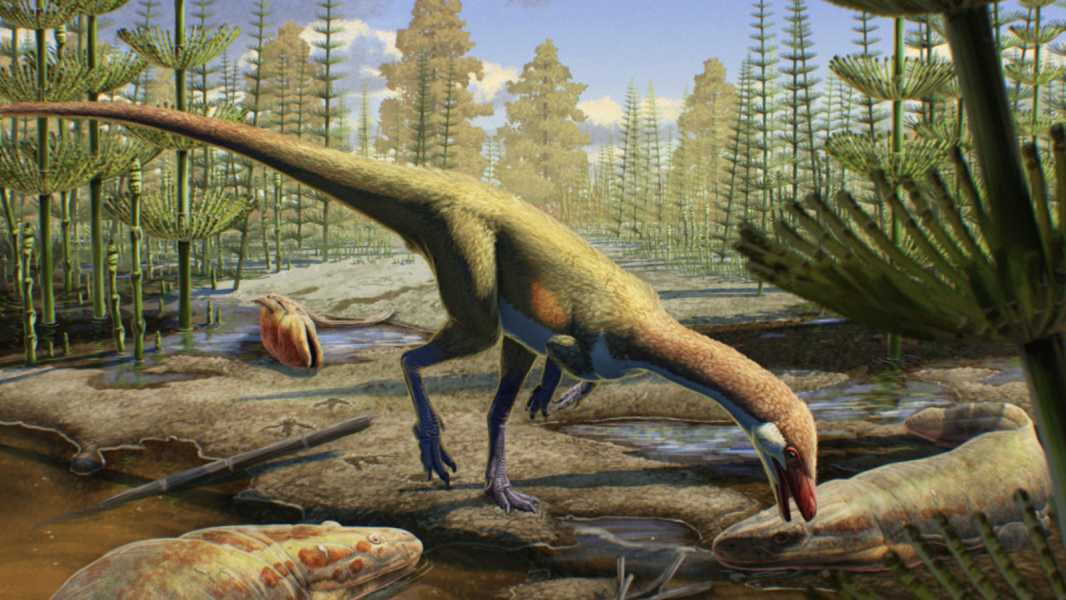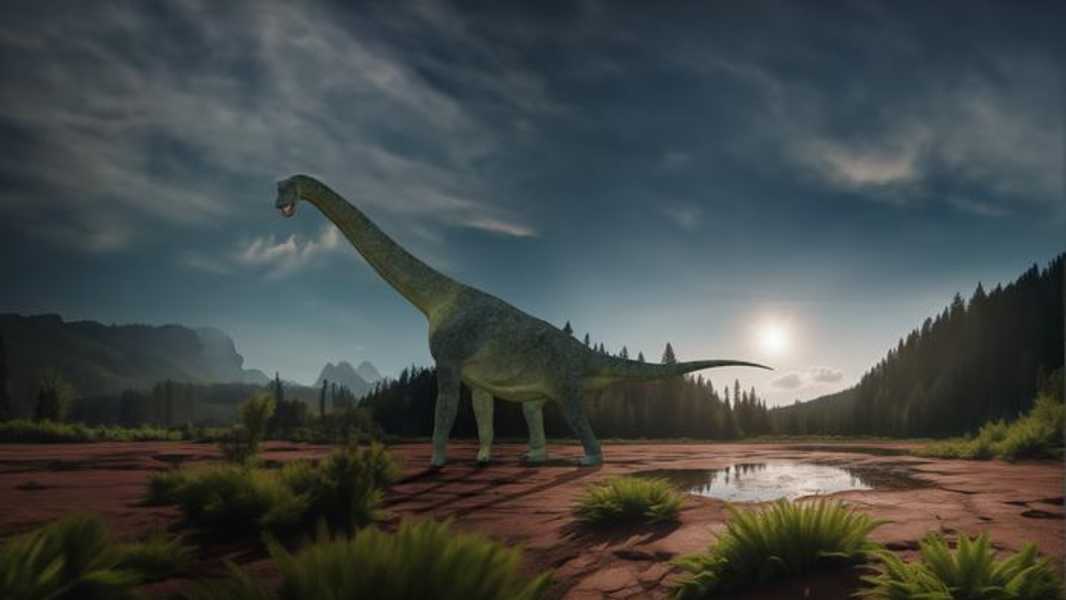
The new species, Ahvaytum bahndooiveche, was about the size of a chicken, scientists say. But it was likely an ancestor of the giant sauropod dinosaurs. (Photo: Gabriel Hugueto)
A previously unknown predator dating back 230 million years has been discovered in the United States. It is the oldest dinosaur ever found in North America and one of the earliest to appear on our planet.
A tiny, chicken-sized dinosaur is thought to have been a distant ancestor of the largest creatures to ever walk the Earth. Its discovery has surprised paleontologists who previously believed dinosaurs did not exist in the northern hemisphere at the time.
Partial remains of several individuals of the new species Ahvaytum bahndooiveche were first found in 2012 in the Popo Agie Formation of Wyoming. The fossils, mostly consisting of leg bones, date back to about 230 million years ago during the Triassic Period (251.9 million to 201.3 million years ago). The species name loosely translates to “long-lived dinosaur” in the language of the Eastern Shoshone people, whose ancestral lands include the site where the fossils were discovered.
In a recent study published January 8 in the Zoological Journal of the Linnean Society, scientists concluded that A. bahndooiveche likely belonged to the silesaurid family and stood about 1 foot (0.3 meters) tall and 3 feet (0.9 meters) long from head to tail. The researchers believe it was likely fully adult when it died.
“It was about the size of a chicken, but it had a very long tail,” said lead study author David Lovelace, a paleontologist at the University of Wisconsin-Madison.

The remains of A. bahndooiveche indicate that it is a distant relative of the huge, long-necked sauropod dinosaurs.
The structure of the leg bones suggests that A. bahndooiveche was a very distant ancestor of the sauropods, a group of huge, long-necked dinosaurs like Brachiosaurus and Diplodocus that probably appeared around 50 million years later.
“We think of dinosaurs as giant monsters, but they originally looked completely different,” Lovelace says.
Earlier than expected
The most surprising takeaway from the new fossils is that they reshape paleontologists' understanding of how quickly dinosaurs could conquer the planet.
Dinosaurs first evolved in Gondawana, the southern part of the ancient supercontinent Pangaea, which included what
Sourse: www.livescience.com





